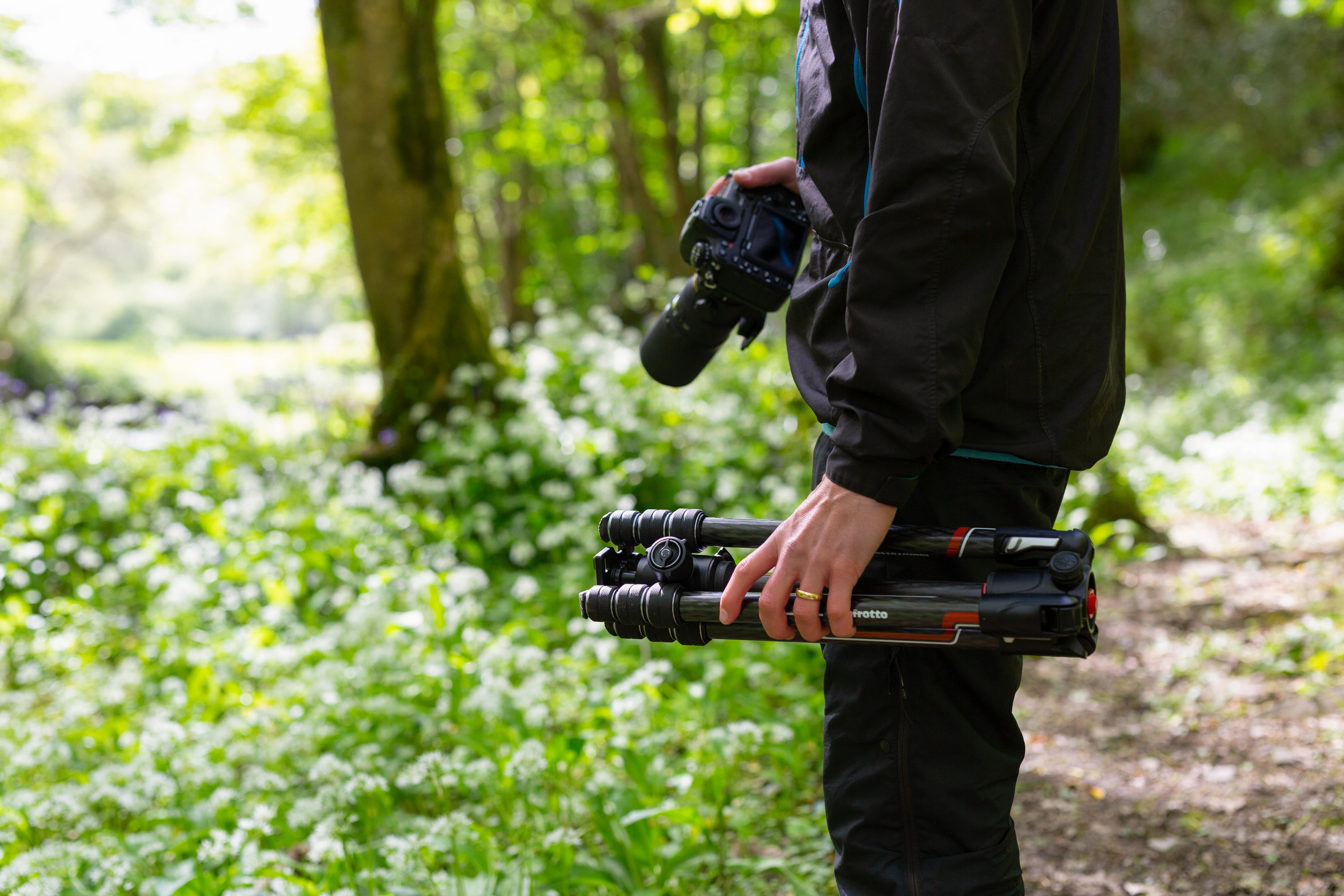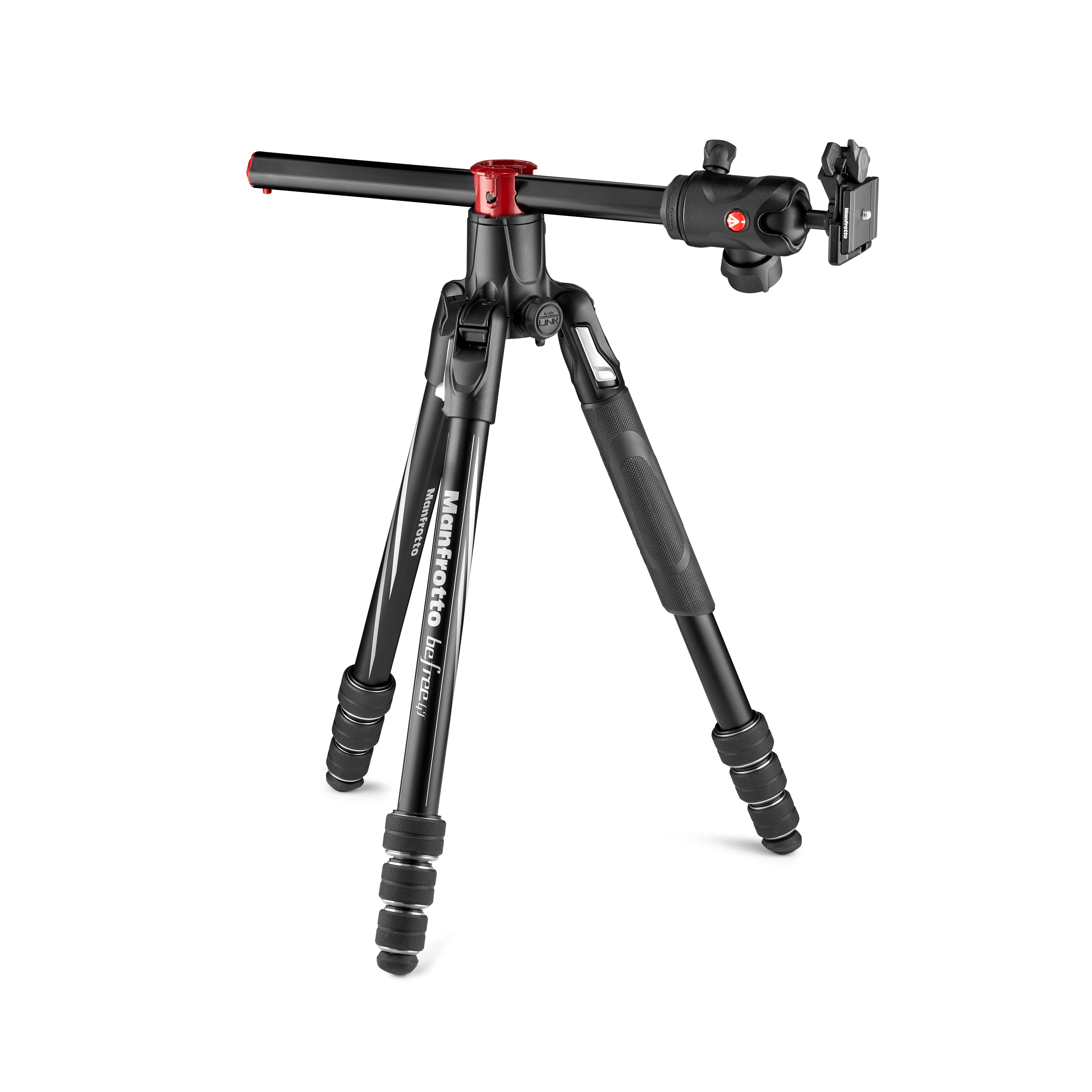The Best Camera Stabilisation Accessories for Sharp Images


One of the best things about digital photography is the ability to encapsulate immense detail in your images, capturing moments in time and ensuring every aspect of your shot is included in the final photograph. There’s just no other medium that provides the same extent of detail capture and image quality when compared to digital imaging, whether you use an action camera or DSLR.
But one of the key essentials to great photography and ensuring you capture sharp images, even in low light, is how stable your digital camera is when you’re snapping away, whether you’re photographing still or fast-moving images.
While there are several techniques that allow for maximum detail capture and the elimination of camera shake, such as lens choice and camera resolution, it's camera stabilisation that really makes the difference. Of course, lenses will affect the sharpness of your image so ensuring you have the right lens attached is key, but they won’t have nearly as much of an impact as good camera stabilisation technology or a tripod.
In this blog, we’ll take a look at some of the best methods of image stabilisation when it comes to your photography, whether you opt for camera accessories for your handheld device or modern image stabilisation systems.
IBIS vs Tripods
When it comes to figuring out the best way to stabilise images when using your DSLR, you’ll usually be considering two options: in-body image stabilisation (IBIS) or a traditional tripod. Each method has benefits and drawbacks, so it’s important to consider each option carefully on every shoot you do to ensure you pick the best method for the job at hand.
IBIS is a relatively new technology built into modern-day cameras and designed to stabilise your sensor. It’s not an essential piece of equipment to keep in your kitbag, but cameras with this sensor technology can be hugely beneficial. IBIS works by physically moving the in-camera sensor to make up for camera movement, thus delivering shake-free video footage and sharp image quality when handheld shooting.
Before sensor-shift technology like IBIS, photographers would be bound by shutter speed rules to help them achieve sharp images. For example, one commonly followed shutter speed guideline to avoid camera shake was to ensure the shutter speed was reciprocal to the lens focal length, i.e. a 100mm lens on your DSLR would need a minimum shutter speed of 1/100 of a second.
Another method similar to IBIS is in-lens or lens-based stabilisation, which is where an additional lens element moves and ensures stable image protection on the sensor. While this built-in method can work, it's much less convenient than IBIS and tends to be more expensive.
Tripods, on the other hand, are a necessity in any professional photographer’s arsenal of gear, whether you use a DSLR, action camera or compact camera. In fact, we would always recommend a top-of-the-line one as part of any kit upgrade because it’s a piece of equipment that you’ll use time and time again on a variety of projects. By spending more, you can dramatically improve the sharpness and overall quality of your work, without needing to consider IBIS or other methods of keeping still.
When comparing the two, there is only so much that in-body image stabilisation can do. Of course, it will reduce some camera shake. Still, it cannot be as effective as a good tripod that offers far greater versatility of movement and camera placement, in addition to optimal stability. Furthermore, when you add accessories like the
, you open up millions of creative possibilities which are simply not available to others without this bit of kit.
How do I know which tripod to buy?
Professional photography tripods are available in abundance, with several specs, designs and use cases for every type of photographer. To help determine whether your selection is worth buying and will deliver the outcomes you expect, you need to consider the following parameters:
- Weight
- Size
- Ease of mounting the camera
- Precision Range of movement
- Stability
Every photography genre will demand a slightly different specification, so let’s delve into the gear that is demanded by those capturing the beauty of nature both from afar and up close - in other words, landscape and macro photographers.
The best tripod for landscape photographers
A landscape photographer should always look for ultimate stability, as well as accurate framing. Of course, stability is the most important reason for using a tripod with your digital camera in landscape photography as it helps to avoid camera movement during exposure. But it also enables greater creativity for shooting in low light or capturing the ‘unseen’, like creamy white water or star trails in the sky.
The is the ideal option for photographers with DSLR and full-frame mirrorless cameras. It's also easy to set up using the quick-lock system, saving time while letting you concentrate on the creative side of your art. Should you want to add accessories, such as friction arms, the Easy Link connector allows you to do just that.
For even more creativity, you can use the 3-way head tool. With its precise 3-axis movement, you can use even the heaviest of cameras and lenses without worrying about them breaching the weight limit or negatively impacting your shots. Compared to a ball-head, this is the best way to compose shots if you care about the exact placement of your camera and want to make precise adjustments.
A final important benefit is the ability to quickly set up and leave the scene to chase the next image. The 055 kit has a Quick Power Lock system which allows it to be set up and broken down within seconds - this is especially beneficial for photographers working outside where the weather can be unpredictable.
Overall, the 055 is an incredibly versatile piece of kit that is quick and easy to set up, while also being extremely stable and allowing for precise adjustments. In other words, the 055 is a must-have for landscape shooters, especially those with DSLR or mirrorless cameras.


A landscape photographer should always look for ultimate stability, as well as accurate framing. Of course, stability is the most important reason for using a tripod with your digital camera in landscape photography as it helps to avoid camera movement during exposure. But it also enables greater creativity for shooting in low light or capturing the ‘unseen’, like creamy white water or star trails in the sky.
The is the ideal option for photographers with DSLR and full-frame mirrorless cameras. It's also easy to set up using the quick-lock system, saving time while letting you concentrate on the creative side of your art. Should you want to add accessories, such as friction arms, the Easy Link connector allows you to do just that.
For even more creativity, you can use the 3-way head tool. With its precise 3-axis movement, you can use even the heaviest of cameras and lenses without worrying about them breaching the weight limit or negatively impacting your shots. Compared to a ball-head, this is the best way to compose shots if you care about the exact placement of your camera and want to make precise adjustments.
A final important benefit is the ability to quickly set up and leave the scene to chase the next image. The 055 kit has a Quick Power Lock system which allows it to be set up and broken down within seconds - this is especially beneficial for photographers working outside where the weather can be unpredictable.
Overall, the 055 is an incredibly versatile piece of kit that is quick and easy to set up, while also being extremely stable and allowing for precise adjustments. In other words, the 055 is a must-have for landscape shooters, especially those with DSLR or mirrorless cameras.
The best tripod for macro photographers
Macro images should capture the very smallest features, often on tiny objects or organisms, resulting in intricately detailed photography. Macro photographers need to use specialist tripods with even more movement than those designed for landscape photography, like the 055 Kit.
The best option for macro photographers is the , for a multitude of reasons. The main element that sets it apart from others on the market is the stable and secure 90° column, allowing the camera to be offset from the leg position while ensuring you can shoot from ground level or directly overhead with accuracy and stability.
Previously, a macro photographer would simply use the camera as a handheld device, as a tripod was not practical to use for this type of photography. However, with the introduction of the BeFree GT Xpro, this is no longer a problem. The centre column can move in any direction, allowing for ultimate versatility and stability, while the head itself is a ball-head, delivering fast set-up and easy-to-use functionality.
If your subject is likely to move suddenly, in an ideal world you’d like to be able to open a single knob and move the camera with it - the ball-head allows you to do just that. Additionally, it's incredibly small, folding to a compact and discrete 43cm. This means it’s the perfect accessory for photographers who shoot on location or those who frequently travel as you can easily fit it into your hand luggage.




Genie Micro – the best way to control your camera* remotely & more


As well as camera accessories and in-body image stabilisation technology, another key tool that should be in every professional photographer's camera bag is the Genie Micro. This all-in-one smart remote has been designed for mirrorless cameras and DSLR cameras, enabling photographers to control their cameras from an intuitive smartphone app.
The takes the concept of a remote release and amplifies it to new heights. One of the common reasons to use a remote release is to avoid touching the camera in long-exposure photography. Another reason is to be able to control the camera from a distance, should it not be directly accessible.
Essentially, the Genie Micro is the ultimate smart remote for your camera. With control via the smartphone app, it eliminates the need for cables; you can be as far as 10 metres away from your camera and still control it seamlessly without ever touching it.
Photographers of all genres will enjoy the comfort of being able to set up long time-lapses, use HDR mode, and even use the live control mode to create stop-motion work all from a phone app that makes remote control of your camera as easy as a single touch. Plus, with an internal rechargeable Li-ion battery and around 7-hour battery life, it's the perfect camera accessory for day-long shoots.
Closing thoughts
Whether you opt for built-in sensor shift technology, camera accessories or other alternatives, one thing that's clear is image stabilisation is essential for capturing the sharpest and clearest images.
To ensure optimal image stabilisation and crystal clear imagery, combining the Genie Micro with either of the tripods highlighted in this article will deliver the best results. With greater stability, you’ll also be able to capture images of a higher quality that just wouldn’t be possible without this equipment. Whether it’s a long exposure of a stunning mountain view or a close-up of a butterfly, the genie micro and Manfrotto tripods are the way to go.
* Please check the camera compatibility charts on the Manfrotto Genie Micro product page to see if your digital camera is supported.


























